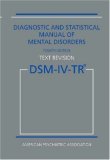| iPsychology
|
|
Schizophrenia DSM-V |
Index
Schizophrenia is a chronic and severe mental disorder that affects how a person thinks, feels, and behaves. People with schizophrenia may seem like they have lost touch with reality. Although schizophrenia is not as common as other mental disorders, the symptoms can be very disabling. Schizophrenia (in Greek, “split mind") is a severe mental illness characterized by a variety of symptoms including but not limited to:
The diagnosis of schizophrenia as expanded in DSM-V
Criterion A now includes five items:
At least two of the five symptoms must be present for at least one month. One of the two symptoms must be delusions, hallucinations, or disorganized speech. Negative symptoms, which impair function the most, are now official. In discussing diagnostic features, the authors state that “no single symptom is pathognomonic of schizophrenia” and it is a “heterogeneous clinical syndrome”. This is what makes schizophrenia both fascinating and frustrating: Two people diagnose with schizophrenia may look and behave nothing like each other . Criterion B for schizophrenia gets more attention in DSM-5: “Level of functioning… is markedly below the level achieved prior to the onset”. This is not a criterion for schizoaffective disorder. (This is apparently unchanged from DSM-4.) Furthermore, the authors note that if symptoms of schizophrenia begin in childhood or adolescence, “the expected level of function is not attained. Comparing the individual with unaffected siblings may be helpful.” This must only amplify sibling rivalry. The authors also comment that “individuals who had been socially active may become withdrawn from previous routines. Such behaviors are often the first sign of a disorder.” In the past few years, some studies have argued for treating people with who are at high risk of developing schizophrenia, even though they have not yet met diagnostic criteria. This is controversial because we cannot predict who will definitely develop schizophrenia. Some treatments, such as antipsychotic medication, are not benign. This statement seems to permit more assertive treatment of youths who present with “prodromal” symptoms of schizophrenia.
Criterion C discusses the six-month duration that distinguishes “schizophrenia” from “schizophreniform disorder” (one to six months) and “brief psychotic disorder” (one day to six months).
Criterion D makes the distinction between schizophrenia and schizoaffective disorder (primarily psychosis and limited mood symptoms in schizophrenia). This is repeated multiple times under the entry for schizoaffective disorder.
Criterion E asks the reader to please rule out psychosis due to drugs or a medical condition.
Criterion F makes the distinction between schizophrenia and an “autism spectrum disorder or a communication disorder”. That replaces “pervasive developmental disorder” in DSM-4.
The previous specifiers for schizophrenia (paranoid, disorganized, catatonic, etc.) have disappeared; now, specifiers are related to the illness course (“first episode” versus “multiple episodes”; state of remission; etc.). People can and do get better from schizophrenia. (DSM states that 20% of people with schizophrenia have a “favorable course”.) The authors also explicitly comment about “decrements” in cognitive function in people with schizophrenia, which frames the condition as a brain disease. Similarly, there’s a note that “unawareness of [schizophrenia in the patient] is typically a symptom of schizophrenia itself rather than a coping strategy.” It’s not a psychodynamic defense mechanism of denial.
It should be noted that the vast majority of persons with schizophrenia are not aggressive and are more frequently victimized than are individuals in the general population.
Late-onset cases (i.e., onset after age 40 years) are overrepresented by females, who may have married.” Why is that last part there? Is this meant as a consolation prize to their husbands? DSM-5 officially concedes that “some minority ethnic groups” are more likely to be diagnosed with schizophrenia. Substance-related disorders are high (over 50% smoke cigarettes regularly). They are also more likely to experience weight gain, diabetes, metabolic syndrome, cardiovascular and pulmonary disease. People with schizophrenia at high risk for suicide: 5-6% die by suicide and 20% attempt suicide. The combination of these factors may explain why people with schizophrenia die early compared to the general population.
Treatment ( Psychotherapy ) Adlerian Therapy
Treatment ( Pharmacotherapy ) Clozaril
|


